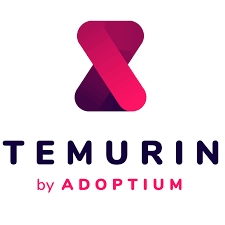| New Eclipse Temurin OpenJDK Build Released |
| Written by Nikos Vaggalis | |||
| Tuesday, 28 May 2024 | |||
|
The Eclipse Foundation, together with the Adoptium Working Group, have announced the latest release of the Temurin Java SE runtime. This landmark release supports 54 version/platform combinations and five major OpenJDK versions. Given the news, we examine why Temurin has been the flagship of the OpenJDK builds. As the Eclipse Foundation points out in its announcement, Adoptium Temurin has seen unprecedented growth and adoption, making it the fastest-growing open source Java SE runtime, currently exceeding 23 million downloads per month and more than 380 million downloads to date. The recent 2024 State of the Java Ecosystem from New Relic reports that Temurin has seen 50% year-over-year growth and has a share of 18% of the Java market as the second most popular JDK vendor. We've been closely monitoring Temurin's progress since 2022, commencing with the launch of the Adoptium Marketplace , Mike Milinkovich, executive director of the Eclipse Foundation, at the time said that the move was necessary in order to establish quality across OpenJDK: With the increasing volume and diversity of OpenJDK runtime distributions, it’s become clear that quality and consistency across the ecosystem must be established. Organizations backing the Adoptium Marketplace included most of the big names in the Java sector with one big exception - Oracle. Those who are taking part include Alibaba Cloud, Azul, Huawei, IBM, iJUG, Karakun AG, Microsoft, New Relic, and Red Hat. From that lot of OpenJDK vendors, what made Temurin instantly stand out is that it was the first adhering to Eclipse AQAvit, a project that was created specifically for ensuring that a binary is ready for production deployment according to "the high quality bar set by the Eclipse Foundation". Temurin is at par since its release artifacts are produced for 350,000+ automated tests on more than 100+ test machines and OS platforms, meeting modern requirements which include containerized tests. A few months later, Temurin was picked up by Red Hat which added LTS support for it alongside its own RedHat OpenJDK builds, testifying to Temurin's dynamic expansion. The support aimed to deliver quarterly updates of JRE and JDK for the OpenJDK 8, OpenJDK 11, and OpenJDK 17 distributions. These updates are available as RPM, MSI, archive files, and containers. Of course the support is ongoing since then. Then it was Google's turn to jump on the bandwagon, joining the Adoptium Working Group to make Temurin available across Google Cloud Platform (GCP) products and services. As Cameron Balahan, Senior Product Manager at Google Cloud, said at the recent Google Cloud Next ‘22 Event in a session entitled 5 reasons why your Java apps are better on Google Cloud: We're committed to making Google Cloud the best cloud for Java which extends even further to your core Java tools and even your runtime. To that end I'm pleased to announce that Google has joined the Eclipse Adoptium working group, a consortium of leaders in the Java community and makers of the Temurin build of Openjdk. Temurin is one of the world's most popular jdk distributions certified by Adoptium for heightened compatibility and security testing. As a member of Adoptium Google will make Temurin available across GCP products and services providing Java customers the highest standard of enterprise security and more opportunities to create integrated security focused solutions. The question now that remains, is that with so much choice amongst OpenJDK vendors, why pick Temurin? The main difference between the various distributions is mainly that they may contain fixes and enhancements that may have not yet been formally backported upstream. As such the Microsoft build of OpenJDK is recommended when running Java applications on Azure. Red Hat is the OpenJDK to choose if you're on Red Hat Enterprise Linux, while Corretto if you run Java applications on Amazon Linux 2 in AWS. Then there's Liberica JDK which is the runtime of choice by VMware for Spring Boot and Spring Native. Contrary to specialization, Temurin is general purpose and can be used in applications that span from the desktop to data centers and the cloud, deployed on multiple operating systems, platforms and cloud environments. This new release further establishes it firmly as the leader of the OpenJDK builds. As Thabang Mashologu, vice president, Community and Outreach for the Eclipse Foundation states: The Adoptium Working Group’s efforts have been instrumental in delivering high performance, enterprise-ready runtime binaries and expanding the potential use cases for open source Java. Eclipse Temurin is one of the first open source Java distributions to support RISC-V, introducing new opportunities for Java in Industrial IoT and beyond. As said, the new release supports 54 version/platform combinations and five major OpenJDK versions (8, 11, 17, 21 and 22), underscoring Adoptium's commitment to a diverse and comprehensive range of supported builds, spanning Linux, Mac, Windows, and various architectures, including x64 and ARM. Beyond that, Eclipse Temurin now also supports RISC-V microprocessors, broadening its applications to embedded technologies, IoT, machine learning, automotive software, and high-performance computing. I conclude with just a question to ponder...is Temurin the build to rule them all?
More InformationRelated ArticlesEclipse Launches Java Binaries Marketplace
To be informed about new articles on I Programmer, sign up for our weekly newsletter, subscribe to the RSS feed and follow us on Twitter, Facebook or Linkedin.
Comments
or email your comment to: comments@i-programmer.info
|
|||
| Last Updated ( Tuesday, 28 May 2024 ) |



